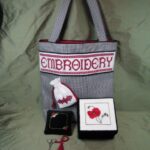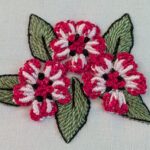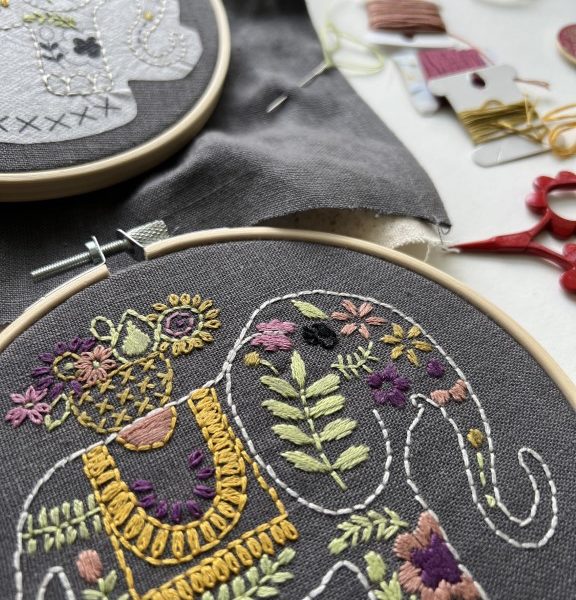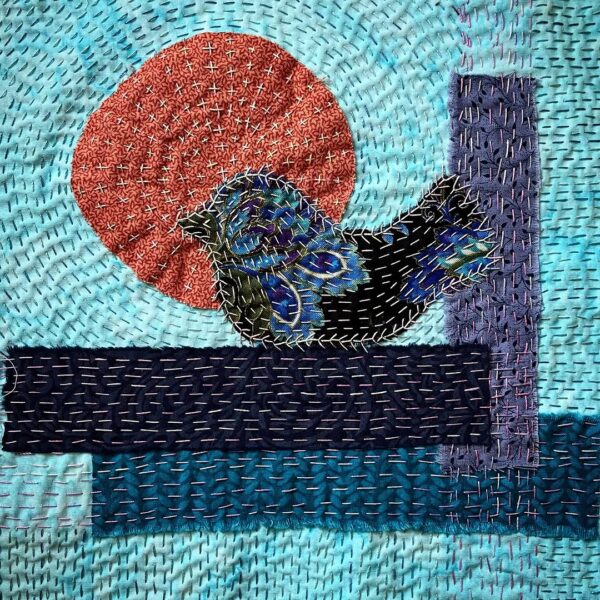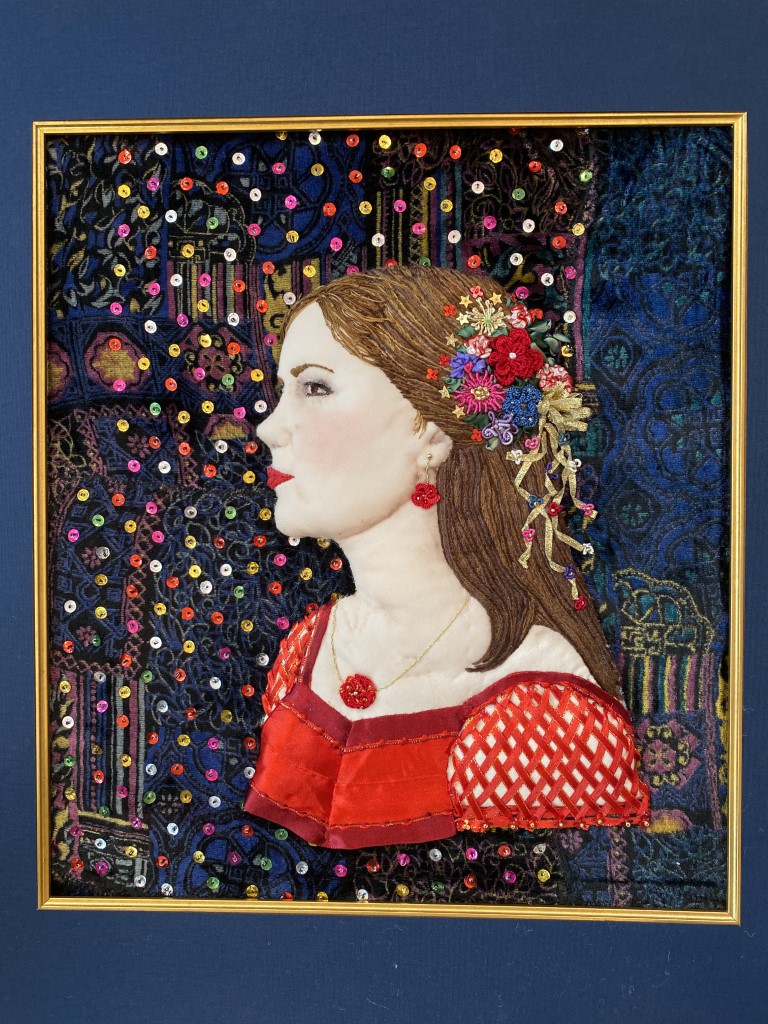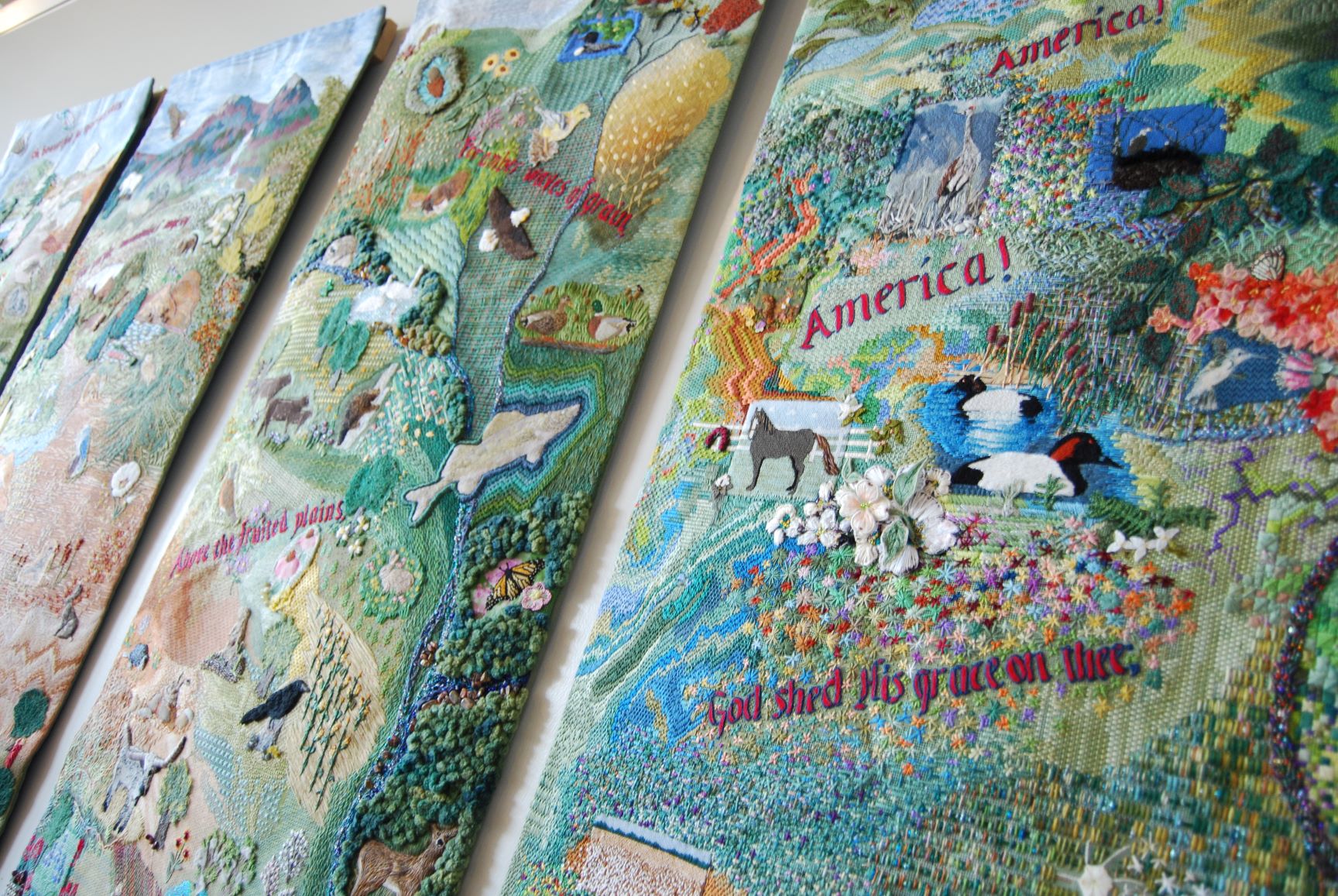Technique: Goldwork
Place of Origin: China
Earliest known date: (25-220 AD)
History:
It is difficult to date and determine the exact origins of goldwork embroidery. Goldwork has been practiced in different parts of the world for centuries; however, most experts agree that goldwork likely originated in China during the period of the Eastern Han Dynasty (25-220 AD).
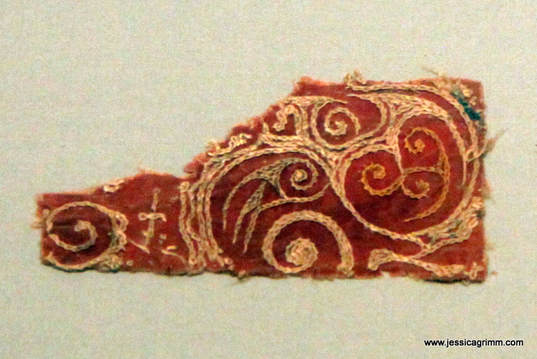

Historians believe textile merchants spread goldwork from China through Japan, India, Egypt, Italy, Babylon, Greece, and Persia. In China, goldwork consisted of three different methods: gold foil, gold thread, and gold powder. Gold foil consisted of melting and then beating gold into a thin foil that was then applied to silk fabric with bamboo pliers and lacquer. Gold thread consisted of either thin wire made from gold or gold-wrapped silk, linen, or cotton thread. Gold powder consisted of mixing gold powder with a binding agent and then painting or printing onto silk or other fabrics.
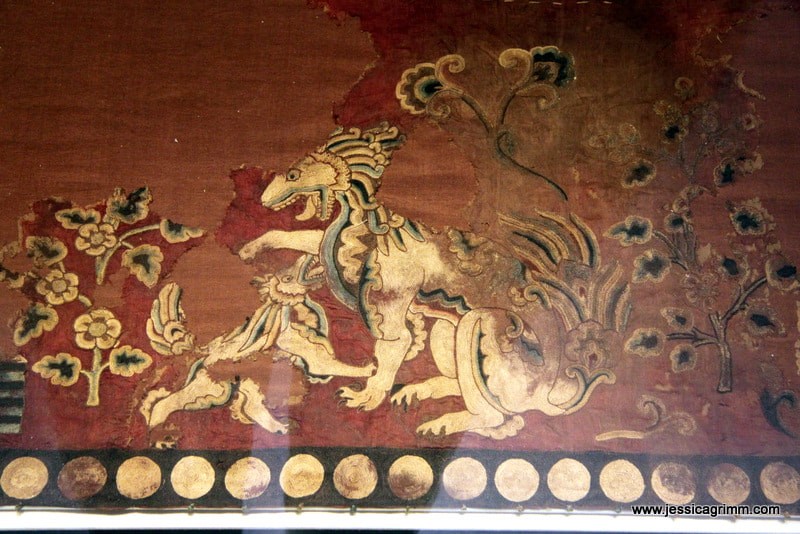
Given these methods, it has likely become apparent to readers that many of the techniques involved in ancient Chinese goldwork are very different from the goldwork embroiderers practice today. Modern goldwork as we know it was practiced and made popular in England during the early Middle Ages and Northwestern Europe during the late Middle Ages: notably, Opus Anglicanum and Or Nué.
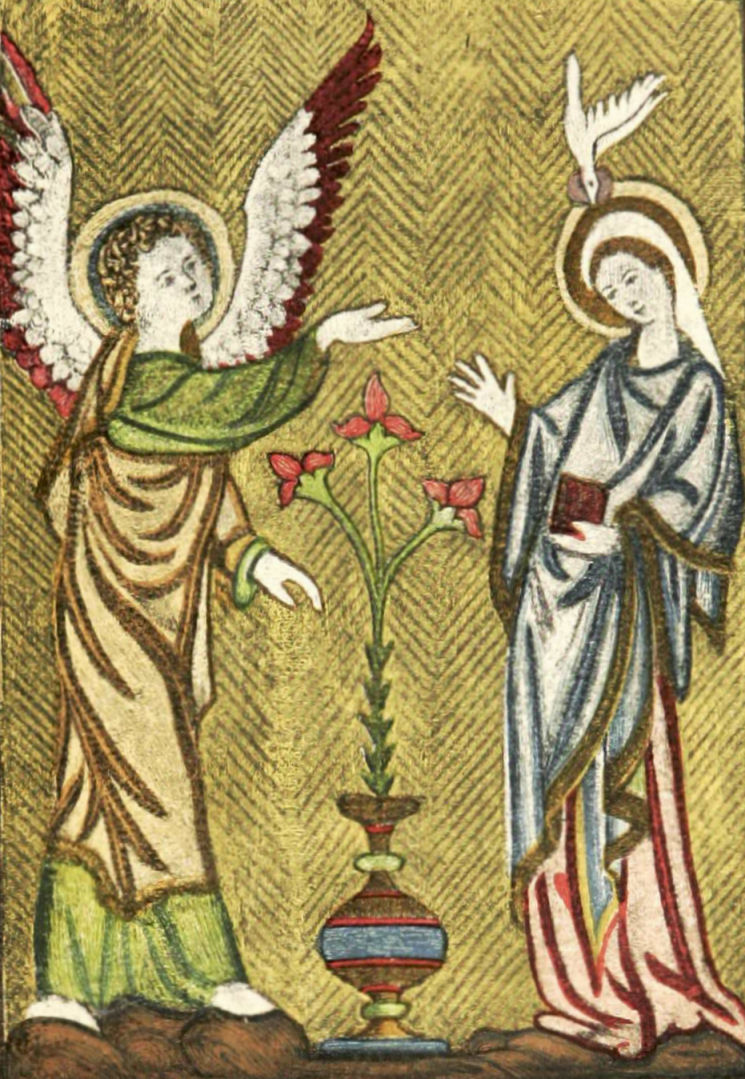
Opus Anglicanum (English Work) was practiced during the Middle Ages and was mainly ecclesiastical in nature. Opus Anglicanum depicted religious scenes in gold and silver threads, stitched first on linen ground and then later velvet cloth. These embroidery pieces were used for religious decorations and furnishings (altarpieces, vestments, mitres, etc), and also by royalty, nobility, and the military.

Unlike today’s goldwork techniques, Opus Anglicanum used an underside couching technique, with stitches worked on the back of the fabric to protect the couching and make it less susceptible to wear. This technique is complex and difficult to work, requiring very skilled embroiderers to accomplish. Interestingly, the end of the popularity of Opus Anglicanum occurred during the Black Plague, which wiped out many of the embroiderers crafting this work as well as their customers!
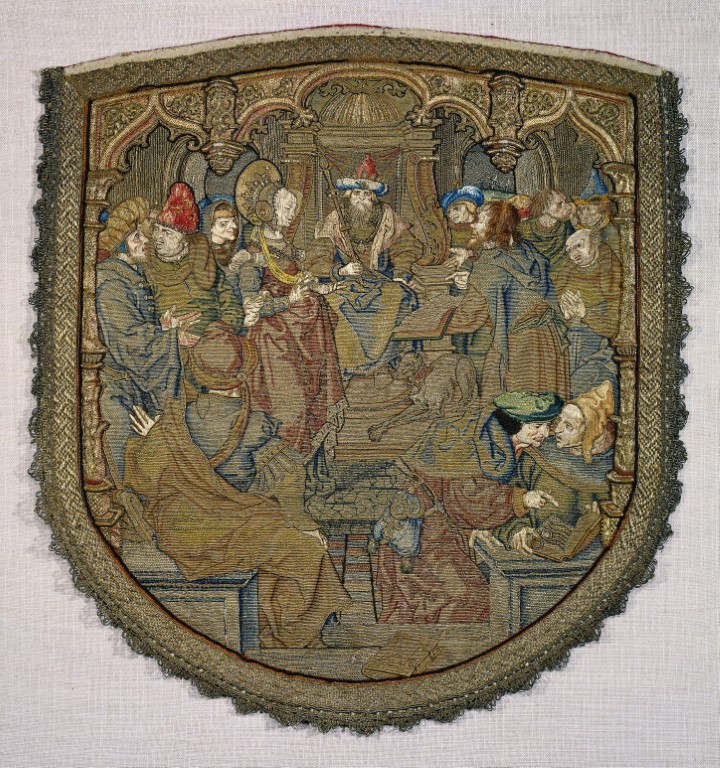
Or Nué followed Opus Anglicanum, developing in France, Belgium and The Netherlands in the late Middle Ages. Here arose the topside couching techniques we recognize today. As with Opus Anglicanum, the subjects of Or Nué were primarily religious in nature.
Today, the term goldwork has become a catchall term for all kinds of metalwork embroidery.
Materials, Techniques, and Stitches:
Goldwork embroidery calls for two different types of threads: one to stitch through the fabric and couch the goldwork threads, and a thicker metal thread that is couched to the fabric.

Elizabethan twist is a type of goldwork thread fine enough to be stitched through fabric (but may also be used for fine goldwork, as the couched thread). Otherwise, most embroiderers use either waxed fine silk thread or polyester.
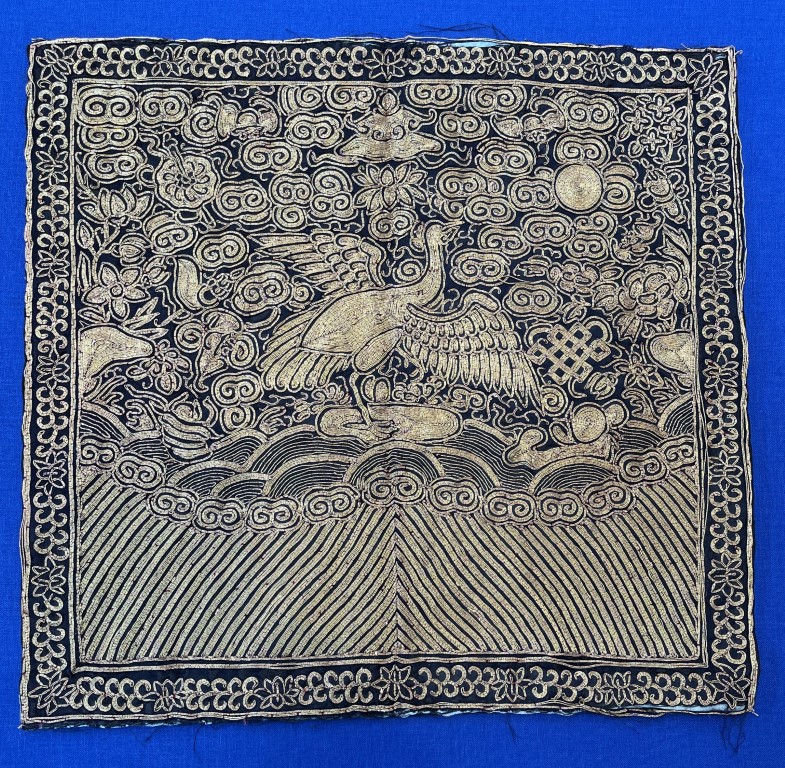
Passing thread wraps a thin strand of metal around a core of cotton or silk; Bullion thread is a hollow, coiled spring; Japan thread wraps gold metal around a strand of cotton, Rococo thread tightly wraps fine metal thread around a strand of cotton; Torsade twists multiple threads of metal (sometimes of different colors); and Jaceron is a coiled wire. All of these threads are used with couching.There are many different iterations of the above types of couching threads with slight variations as well.

Couching involves using a waxed thread (as noted above, usually fine silk, and colored to match the metal threads) to fasten the thicker metal thread to fabric. The thicker metal thread is laid across the fabric, with the finer waxed thread stitched over to fix the thicker thread in place.

In addition to surface and underside couching, goldwork embroidery may feature chipping, felt padding, stumpwork, split stitch, brick stitch, silk shading, laid work, satin stitch, stem stitch, and other silk embroidery techniques. Embroiderers may also affix pearls, spangles, and sequins as embellishments.
Interested in learning more about goldwork embroidery? We have two Individual Correspondence Courses with teacher Kay Stanis that focus on metal threads! Introduction to Metal Thread Embroidery is an in-depth study of the techniques of metal thread embroidery that will introduce the student to the shimmer of real gold and silver on fabric. Silk and Metal Thread Embroidery is an in-depth study of the various techniques of silk and metal thread embroidery. Want more goldwork? Read our interview with goldwork embroiderer Lizzie Pye, as well as our interview with goldwork historian Dr. Jessica Grimm. EGA members will also get to participate in our upcoming virtual lecture with Liz Tapper, Measuring Millimeters on a Napoleonic-Era Dress Coat.
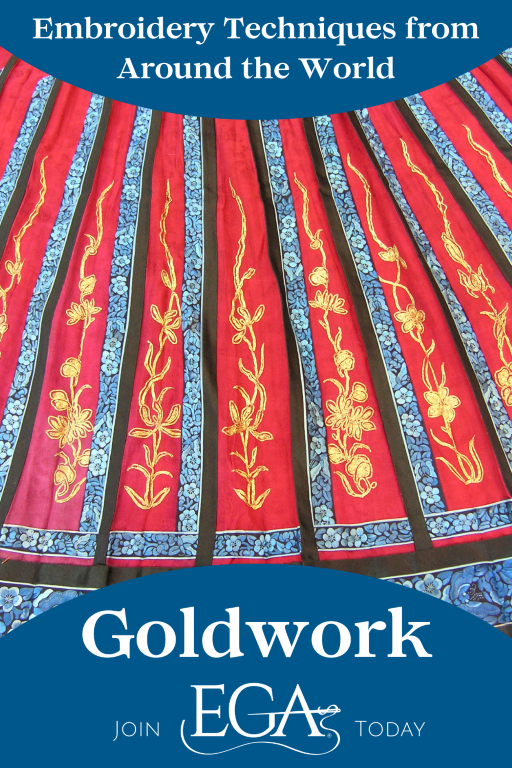
Goldwork (embroidery). (2024, May 23). In Wikipedia. https://en.wikipedia.org/wiki/Goldwork_(embroidery)
Chinese ornamental gold silk. (2024, March 30). In Wikipedia. https://en.wikipedia.org/wiki/Chinese_ornamental_gold_silk
(n.d.). The Tradition of Goldwork. Hand Embroidery. https://handembroidery.com/the-tradition-of-goldwork/
Golden Hinde Embroidery Academy (n.d.). A History of Goldwork Embroidery. Retrieved June 13, 2024, from https://goldwork-embroidery.com/a-history-of-goldwork-embroidery/
School of Stitched Textiles (n.d.). Goldwork Embroidery: A Beginner’s Guide. Retrieved June 13, 2024, from https://www.sofst.org/goldwork-embroidery-a-beginners-guide/
Xiaorui Hu, Weidong Yu, The Techniques and Origin of Ornamental Gold Silks in Ancient China, Journal of Fiber Science and Technology, 2016, Volume 72, Issue 6, Pages 132-138, Released on J-STAGE June 23, 2016, Online ISSN 2189-7654, https://doi.org/10.2115/fiberst.2016-0020, https://www.jstage.jst.go.jp/article/fiberst/72/6/72_132/_article/-char/en
(n.d.). Opus Anglicanum. Textile Research Centre. Retrieved June 13, 2024, from https://trc-leiden.nl/trc-needles/regional-traditions/europe-and-north-america/embroideries/opus-anglicanum
(n.d.). Let’s talk Gold… Goldwork embroidery: A rich history part I. Danielle Balfoort. Retrieved June 13, 2024, from https://www.daniellebalfoort.com/blogs/news/let-s-talk-gold-goldwork-embroidery-a-rich-history-part-i
(n.d.). Or Nue. Textile Research Centre. Retrieved June 13, 2024, from https://trc-leiden.nl/trc-needles/regional-traditions/europe-and-north-america/embroideries/or-nue
Royal School of Needlework (n.d.). Couching. RSN Stitchbank. Retrieved June 13, 2024, from https://rsnstitchbank.org/stitch/couching-stitch
